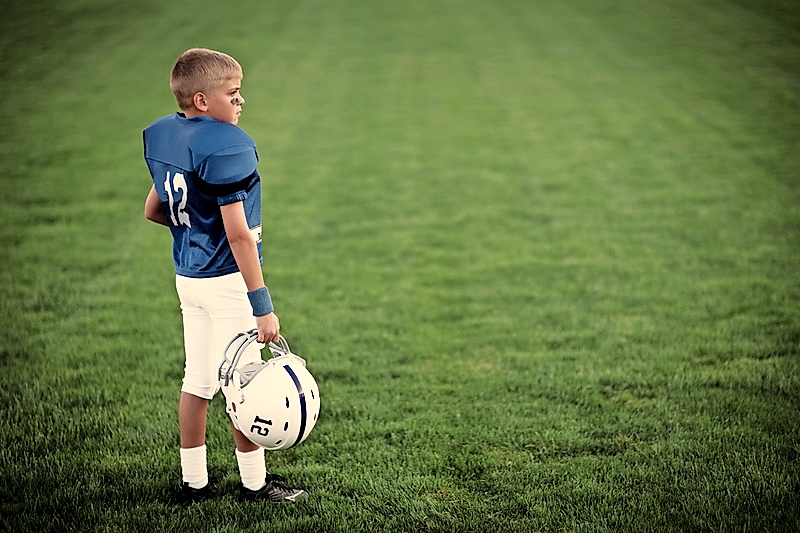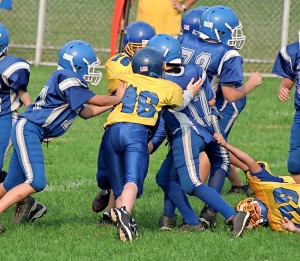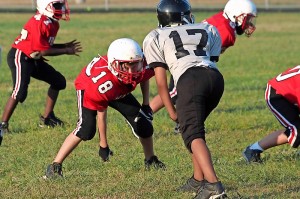Playing it Safe—Understanding New Concussion Protocols For Student Athletes
By Rachelle Stoller
August 2015 View more Featured

With the start of the school year right around the corner, student athletes are gearing up for another sports season. More and more junior high and high school athletes are opting to play contact sports, such as football, soccer, rugby, and lacrosse, which means that the number of concussions will likely continue to increase.
The Hard Facts
The American Medical Society for Sports Medicine estimates that nearly 3.8 million concussions occur every year as the result of sports or recreational injuries, with up to 50 percent of those injuries going unreported. That translates to approximately 135,000 children ranging in age from five to 18 being treated in emergency rooms across the nation for sports-related concussions, according to the Centers for Disease Control and Prevention. Even more stunning is the National Center for Catastrophic Sports Injury Research report that directly links 47 fatalities to high school football alone since 2000.
That statistic is enough to make any coach, trainer or parent take notice. The Illinois High School Association (IHSA) and the American Medical Association (AMA) are not standing idle on the sidelines, they are taking those numbers seriously and have recently implemented new guidelines to protect student athletes who have suffered a concussion.
Here is what you need to know about concussions and student athletics:
It’s Just About Hitting Your Head,Right?
 Critical to proper care is understanding what causes a concussion, points out Dr. Jennifer McNulty, a pediatric emergency medicine physician at Edward Hospital. There are many misconceptions.
Critical to proper care is understanding what causes a concussion, points out Dr. Jennifer McNulty, a pediatric emergency medicine physician at Edward Hospital. There are many misconceptions.
“Concussions are more than just the force of hitting something,” says Dr. McNulty. “It’s also about falling down and the movement of the brain in the head. The more you fall, the higher your risk for concussion.” Even with the advancement in helmet design for contact sports, she believes the technology isn’t quite there yet. “Whether your child is playing a sport with a helmet or not, it’s less about the drama of the injury and more about how your child feels and acts afterward.”
Recognizing a Concussion
The signs of a concussion can be quite typical and include both observed and reported symptoms. Reported symptoms are what the injured athlete says they are experiencing or have experienced post-injury and may include:
• Headache
• Nausea
• Balance problems or dizziness
• Double or fuzzy vision
• Sensitivity to light or noise
• Feeling sluggish
• Feeling foggy or groggy
• Concentration or memory problems
• Confusion
Coaches, trainers and parents may observe other related symptoms, such as:
• Loss of consciousness
• Appears dazed or stunned
• Appears confused
• Forgets plays
• Unsure of game, score, or opponent
• Moves clumsily
• Answers questions slowly
• Shows behavior or personality changes
• Can’t recall events prior to or after the injury
This is where Dr. McNulty recommends that coaches, trainers, and parents pay close attention to the behavior of the student athlete, because a concussion is such a subtle injury. “Parents know their kids best,” she says. “You can’t judge the force of impact as the only marker of the injury. Parents, coaches, and trainers really should be looking at the kid on the field, watching them and making sure they are playing and acting normally.”
New Game Plan for Concussion Protocols
 To address the need for better concussion management in student athletics, the American Medical Association (AMA) instituted new concussion policy recommendations in June of this year that are geared toward improving the long-term health of young athletes. The recommendations state that students who are thought to have suffered a concussion should be removed from a game or practice immediately so that they can be evaluated by medical professionals. It goes further to require a physician’s written consent before the player can return to play or practice. And, the AMA is putting the responsibility on doctors and athletic organizations to develop guidelines that are both evidence-based and age-specific to assess and manage concussions as a result of student athletics.
To address the need for better concussion management in student athletics, the American Medical Association (AMA) instituted new concussion policy recommendations in June of this year that are geared toward improving the long-term health of young athletes. The recommendations state that students who are thought to have suffered a concussion should be removed from a game or practice immediately so that they can be evaluated by medical professionals. It goes further to require a physician’s written consent before the player can return to play or practice. And, the AMA is putting the responsibility on doctors and athletic organizations to develop guidelines that are both evidence-based and age-specific to assess and manage concussions as a result of student athletics.
The IHSA has taken the ball and run with it by creating a concussion management website and campaign called “Play Smart. Play Hard.” The website, www.ihsa.org/PlaySmartPlayHard, serves as a resource for parents, coaches, and trainers with fact sheets, protocols and updates on how the Illinois Advisory Council on Player Safety is addressing concussion management. The IHSA has instituted additional tools, including a requirement that all IHSA athletic directors, coaches, trainers, and volunteers are certified in concussion awareness and re-certified every two years. The program also provides critical updates on legislative information related to concussion management, as well as an information sheet for parents and student athletes to sign that highlights concussion symptoms and the risks associated with playing after having sustained a concussion.
This is all good news to physicians like Dr. McNulty, who treats kids with sports-related head injuries nearly every day and is a parent of student athletes herself. “These new guidelines benefit everyone by eliminating the grey areas and putting the onus on coaches and trainers to be very clear about when a student can return to play,” she remarks. “It also will result in parents becoming more educated on the signs and symptoms of concussions. This way, parents can advocate for their children in a new way by partnering with athletic faculty to let them know when their child isn’t acting him- or herself after an injury. Together, they help insure a safer environment for kids,” said McNulty.
Preventing Concussions
Since most concussions happen on the practice field, coaches and trainers are encouraged to change their scrimmages to prevent such injuries. Some recommendations include not tackling the quarterback during football drills, teaching and encouraging proper form when student athletes do tackle each other, and minimizing the number of helmet-to-helmet drills that are most likely to result in head injuries.
Can Concussions Be Avoided Altogether?
Not really, says Dr. McNulty. Kids will get concussions when they play sports. “No one is saying ‘don’t play,’” she points out. “What these new guidelines do is make sure that kids are completely healthy before they go back to playing after a concussive injury.” That benefits everyone including the athletic faculty, the family and, most of all, the student athlete.


